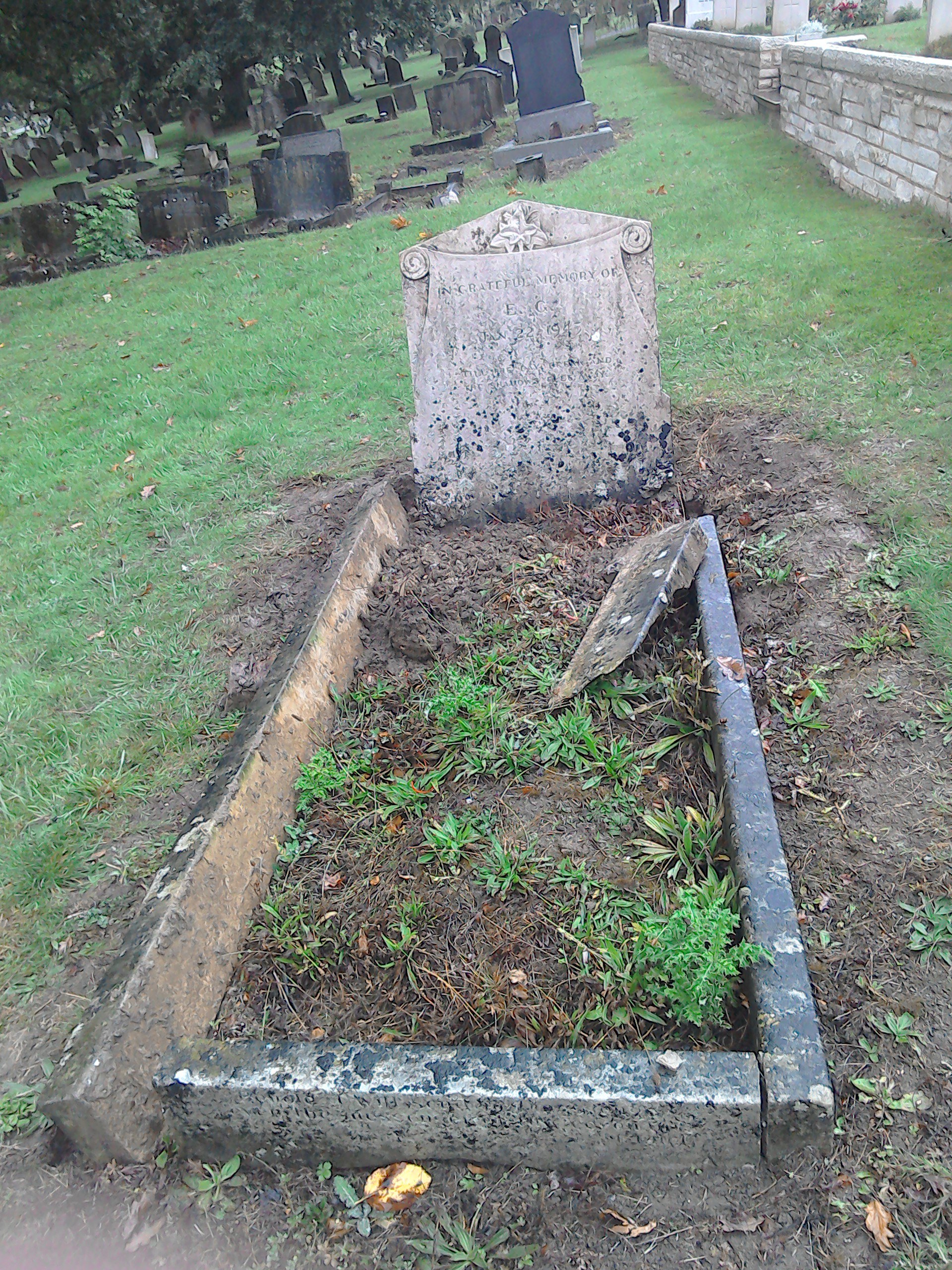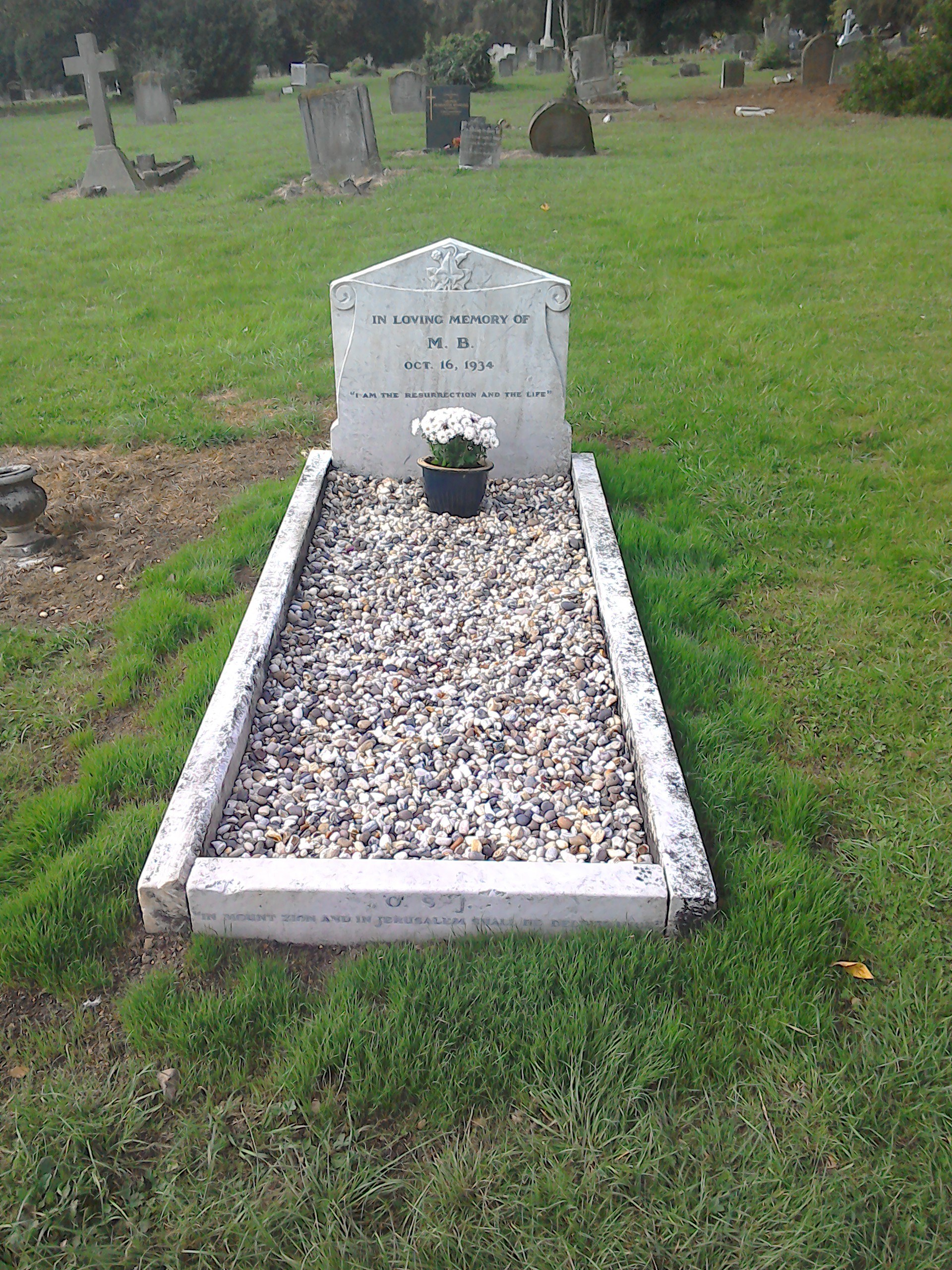As with all humans, the Panaceans died.
They didn’t believe they would truly die but if they did, then come the Day of Revelation they would live again. On that day they would not rise up to a Heaven in the sky, but live on in a Heaven on Earth, walking with Christ in their earthly Garden of Eden in Albany Road, for ever and ever, for theirs would be a Better Resurrection. It would be a Resurrection suitable for sincere people who had perhaps suffered insults and ridicule but still stayed faithful, despite their numbers gradually getting smaller and smaller; they would have a Better Eternity. Over a hundred members were buried in Bedford’s Foster Hill Road Cemetery, mostly in ground previously unconsecrated.
The Society ended when the last member died in 2012, but the real ending is perhaps the place where they were buried. The archive records are limited, incomplete and often inaccurately made, and one way to approach their attitude to Death is to study the graves; like the Society itself, their headstones and the details of the burials are enigmatic and raise just as many questions as they offer answers.
In life, they gathered together as a community, a typical characteristic of Millenarian groups throughout History, so it’s not surprising to find that about 70 of them were buried very close together, in Section I near the Scots Soldiers Memorial. The first one buried here was Jessie Paterson, in 1939, followed by many of the Society “Names”: Emily Goodwin, Canon Payne, Peter Rasmussen, the Gillett sisters, the Greens, the Carew-Hunts and the Ricketts. Neither the Panacea records nor the Cemetery records show whether there was a decision to “buy up” all these plots at the same time, but it seems likely that was the case. It would be symbolic that they would still be a close-knit community, even after death. They are huddled together protectively, almost like sheep in the rain.
Just as Mabel was unable to visit all her Community houses when alive, because she would not go further than 77 paces from her house, so too in death she is set apart from the others, a hundred yards away. Although she is buried a short distance from most of her followers, she is close to her daughter Dilys. Many other members are buried in different places away from the main grouping, perhaps because they had bought the plots before 1939, or perhaps through choice. Ellen Oliver, Fanny Waldron and the Hackings are buried just below the chapel, one of the most sought-after places to be buried.
 Emily Goodwin's grave, before restoration work was completed.
Emily Goodwin's grave, before restoration work was completed.
Generally, the idea of having a plot deep enough for two bodies is so that family members can be together, but with the Panacea graves that’s not the case. Although the Gillett and Keeley sisters are together, married couples seem to have been deliberately kept apart, so that most graves in Section I are of unrelated people being buried together despite their marriage partner being nearby…buried with another unrelated person. 32 members are buried in this way, although, of course all “burial partners” are buried with someone of the same sex.
There seems to be no rhyme nor reason for the choice of “burial partner” other than the thought that they were all close friends, but perhaps it mirrors the way in which in the Community people were sometimes moved from one house to another apparently on a whim. One theory is that Mabel did this to force people who didn’t get on well with each other to change their ways, by keeping them in close proximity; being physically close to someone that you don’t particularly like, for all eternity, would be quite a punishment. But we’ll never know.
 Emily Goodwin's grave, after restoration
Emily Goodwin's grave, after restorationFor many years, the Society kept a record noting a few biographical details of members when they died, listing their qualities and contributions to the history and development of the Society (the “Violet Book”). Most comments are straightforward, though sometimes downplaying the contributions of key people, such as Rachel Fox, due to jealousy or other enmity between the writer and the deceased, and others are surprisingly conciliatory, such as the one for Kate Firth. The comments about Emily Carew-Hunt are stinging, listing her faults as Ingratitude, Self-Will and Inaccuracy, and stating that her faults were due to “not submitting to the ruling of The Divine Mother.” Clearly, she was not well-regarded by whoever wrote this, so it is perhaps appropriate that not only was she buried away from her husband, but she was alone, as if sent to Coventry. But unlike most others she does, at least, still have a headstone.
Nineteen of the Panacea graves have a stone memorial of some kind, although certainly there must have been more originally. For example, Gertrude Searson had an impressive angel on her grave but it, like others, was damaged and taken away, probably in the 1970’s. Some no doubt simply had a wooden cross, which would have rotted away over the years. The headstones still left have been restored from their damaged state by the Panacea Trust.
Many of the headstones have mundane wording, such as “Rest In Peace” or even just the name and date of death. The words on several are clearly the choice of next of kin, such as Edith MacEwan (“a beloved mother”). Wilhelmina Ricketts is “a dear wife and mother” but Donald Ricketts is remembered as “a thoughtful father,” which is an unusual choice. In some cases, the children of members were very much opposed to the Society, and embarrassed by their parents’ beliefs, so it’s not surprising that they chose fairly anonymous wording. The choice for Fanny Waldron “one that feared God and eschewed Evil” (Job 1.8) is appropriate for someone who suffered hardships but remained faithful. I like to think that this was chosen by Mabel, for her aunt, knowing that she wouldn’t actually attend the funeral of someone who had been such a help to her for many years.
A choice for some graves is: “In the sure and certain hope of a Better Resurrection” (on the graves of Emily Carew-Hunt, Christian and Robert Temple snr), from the Book of Common Prayer used in Anglican burial services. The “better” probably refers to Hebrews 11.1. The Ricketts’ stone also reads “The dead in Christ shall rise first,” a reference to St Paul addressing the concerns of believers worried that they might die before Christ returns (Thessalonians 2 4 16).
 Mabel Barltrop's grave, before restoration work was completed
Mabel Barltrop's grave, before restoration work was completedMabel Barltrop is referred to as “M.B” and “O S-J” (Octavia. Shiloh-Jerusalem) and “I am the resurrection and the life.” Ellen Oliver has a direct quotation from the Book of Revelation (referring to the eighth angel of Revelation), which is very appropriate, as her role was to present the members’ prayers to God when she died. Emily Goodwin’s grave is very similar to Mabel’s but not of such good quality. She is referred to as “E.G” and it reads “Till the day break and the shadows flee away.” Bearing in mind the members’ ambivalent attitude to sex, it is interesting that her quotation is from Solomon, the only book that most commentators consider is about sexual love.
None of the headstones refer to The Panacea Society.
When members died cards were written in memory of the deceased, to be attached to floral tributes as part of a strict procedure to be followed on the death of a member and as set out in the “Violet Book.” The vast majority of these cards read “In Sure and Certain Hope of a Better Resurrection.” Some, including Emily Goodwin’s, reads “Until the Day Breaks and the Shadows Flee away” (again, as on her headstone). Several read “In affectionate Remembrance of a beloved sister, from her brothers and sisters.” Often, the deceased has more than one message, being from “H.Q,” from a particular Community Household and sometimes a third, from a named important person such as Emily Goodwin.
 Mabel Barltrop's grave after restoration
Mabel Barltrop's grave after restorationLike the Society itself, the last members gradually just faded away, having only a few remaining colleagues or relations, and their funerals must have been small affairs. The last Panacea burial in Foster Hill Road Cemetery was of Madeline Trugunna in 2005. When Ruth Klein, the last member, died in 2012 the cemetery had closed and she was buried in the quiet, peaceful Woodland section in Norse Road Cemetery.
One of the saddest things imaginable is a neglected grave. Occasionally there is a lighted tea-light on Ruth Klein’s grave, and Dilys Barltrop’s unmarked grave has flowers, but apart from being visited on guided walks round the cemetery, the others are probably unnoticed by passers-by. It’s as though they had never been.






